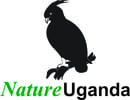African Waterfowl Census

The African Waterfowl Census (AfWC) a.k.a annual waterfowl counts is a programme coordinated by NatureUganda secretariat through a team of volunteers who are bird enthusiasts. Today, regular monitoring covers 18 major sites that have been consistently surveyed for the last 20 years, and another 15, that have had intermittent visits but with good information on species. The information collected is used to determine trends and population estimates for waterbird species. This information contributed data to identification of Important Bird Areas (IBAs) (Byaruhanga et al 2001), the identification and designation of Ramsar sites (WMD/NU 2008) in Uganda and compiling the Uganda Bird Atlas (Carswell et al 2005).
Specifically the objectives of the programme are:
(i) To collect data which supports analysis for determining waterbird population estimates
(ii) To monitor changes in waterbird numbers and distribution using regular standardized counts of representative wetlands.
(iii) To identify and monitor sites important for waterbirds such as breeding, roosting, loafing or feeding areas.
(iv) To provide information on conservation status of wetland sites using birds as indicators.
v) To support government and lead agencies in monitoring critical sites for biodiversity conservation and focusing attention to priority areas as required by international agreements and other initiatives (Davidson and Stroud 2006).
(vi) To increase awareness of the importance of waterbirds and their wetland habitats at local, national and international levels
The water bird monitoring specifically provides clear description of water bird patterns (resident and migratory) including their roosting, feeding and/or breeding sites. It also estimates water bird numbers providing baselines for species composition. This data is used in global processes to help in establishing movements of birds, establishing important sites or routes for migratory birds and stopover points, linking migration movements of birds along flyways, to and from the breeding areas of Asia, Eastern Europe and Siberia.
This means spatial and temporal patterns can be demonstrated including their sites. AWC contributes to the global efforts of water bird monitoring while contributing data to national and global WFC Databases, an avenue for advocacy for site conservation action or interventions.
This programme has also provided a platform for training enthusiastic individuals in waterbird monitoring and is a source of information for students including post graduate students.
Generally, the program helps conservation NGOs, governments, national data bases, international data bases in contributing to valuable information.
Who supports WFCs?
There are 28 regular sites currently in Uganda covering 14 IBAs where waterfowl counts are conducted. There are also 14 other sites in non-IBA areas.
The places visited include wetlands, open water bodies, crater lakes, ponds and islands. This kind of habitat diversity makes Uganda one of the richest countries in terms of bird species.
The wetlands and open waters are good places for feeding, breeding and roosting of the water birds. Therefore the water bird survey is designed to strengthen the water bird monitoring program that produces detailed analyses of habitats, trends and patterns every January and July.
Support for field expenses is provided by Nature Uganda and other collaborating institutions namely the Wetlands Management Department (WMD), Makerere University Institute of Environment and Natural Resources (MUIENR) and Makerere University Walter Reed Project (MUWRP). In the past, this programme used to be supported with funds from WWF, GEF and USAID.
Key Achievements
The waterfowl program has generated important data and information to serve several purposes.
- The information collected from various sites was vital to the designation of additional to 10 Ramsar sites in Uganda. The data is also used as an advocacy tool and therefore contributed to Environmental Impact Assesment processes.
- Monitoring has led to development of site conservation projects where local community resource ownership is promoted through bye-laws.
- The idea of using volunteers and training young energetic monitoring teams has helped sustain the program from the time it was started till now. Collaboration with other institutions has helped in maximizing of resources since the water bird counts can be done along side other activities.
- The monitoring through local community groups (LCG) or site support groups (SSGs) when well coordinated are effective and can contribute information to the development of conservation action projects and sustainability of conservation initiatives.
Related Posts
Recent Posts
NatureUganda hosts nature walk to promote conservation and tourism in Bugoma CFR
Site Profiling of Mabamba Bay and Musambwa Islands: Opportunities for Biodiversity Conservation and Climate Resilience
Greater Painted-snipe – When Females Take the Lead
All Categories
- Conservation and Development (35)
- Eco-tourism (6)
- Education and Awareness (14)
- Forests (12)
- Gorvenance (1)
- Habitats (13)
- membership (2)
- Nature walk (3)
- People (10)
- Projects (13)
- Public dialogue (9)
- Research and Monitoring (22)
- Sites (6)
- Species (13)
- Wetlands (15)
- Wildlife (10)




